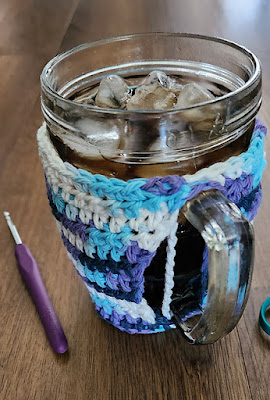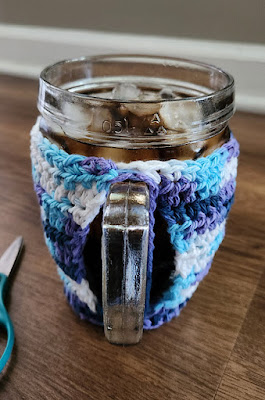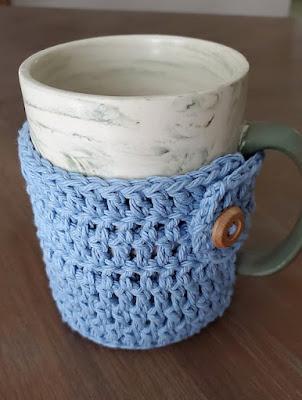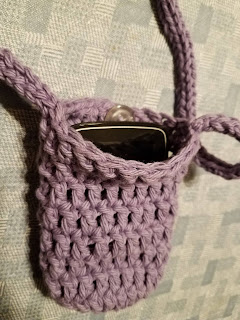The pattern for this Tendril Shawl is available for free on the designer Carmen Heffernan's blog. She also provides a video tutorial that walks you through the setup rows and the first couple of pattern repeats, which is very helpful for getting this project started.
I made mine at a heavier gauge than the original pattern calls for, but it worked out well and produced a lovely shawl/wrap/scarf. My yarn is Hobby Lobby I Love This Cotton in the Emerald Pine colorway, which is labeled as a 4 weight, and I'm using a 5.5 mm hook. I had a few skeins of this colorway left over from my Dressy Swingy Shawlivest project, and I thought they would look good being worked into the Tendril Shawl design. This yarn looks and feels more like a 3 weight despite the fact that it's labeled a 4 weight, and the cotton is so soft and smooth that it's a pleasure to work with.
 |
| Finished with gothpixy's edging |
I love the sawtooth edge and the beautiful lacy-ness of this shawl. The project grows quickly, which is satisfying, and the four-row repeat becomes fairly intuitive after you've worked it a few times.
 |
| Finished size |
The only downside to using this particular yarn is that the skeins are pretty short at only 153 yards each, so I was worried I might not have enough yardage on hand to make a full size shawl. The first skein ran out at the beginning of row 36.
 |
| End of first skein |
The second skein ran out after making it most of the way across row 52.
 |
| End of second skein |
My third skein ran out almost at the end of row 64. Thankfully, I had another skein available to finish that row and continue, because the top edge of my shawl was only about 64 inches long at that point. I used the fourth skein to work another two "points" and then do the edging row.
 |
| End of third skein |
I started working the picot edging row as written in the pattern, but I felt that it was coming out too tight, so I searched through the Tendril Shawl project gallery page until I found gothpixy's project.
Gothpixy suggested an alternate way to work the picot edging that I ended up using for my project. I like their edging better for two reasons: One, it provides a lovely bumpy, wavy edging that finishes the edge really well with an easier method than working traditional picots. And two, it utilizes an extra chain stitch between each bump, so the edging doesn't tighten the edge in the same way that the original pattern's edging row was doing for me. You should check out gothpixy's project to see if maybe you might like their edging better, too!
 |
| Getting started |
The designer says the finished fingering-weight samples she made measure about 70 inches (178 cm) on the long top edge after 64 rows (65 rows with the final edging applied), which is 16 "points" on the bottom edge, and 32 inches (82 cm) tall/deep on the border edge after blocking.
I crocheted mine to 18 points, or 72 rows, plus the edging row. My shawl's total length is about 72 inches before blocking.











































